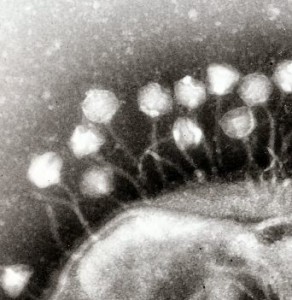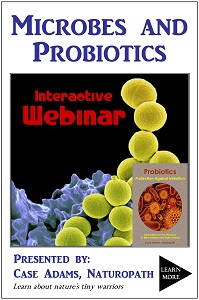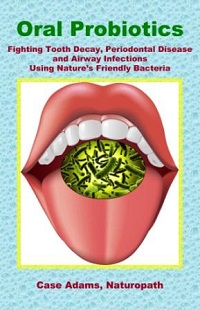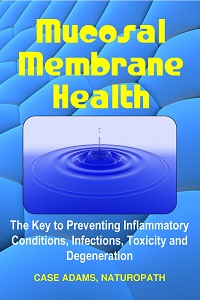What are Bacteriophages and why are they being sprayed on foods?

Bacteriophages may become more and more problematic for us as bacteria become more resistant to antibiotics.
Bacteriophages – also called phages – are viruses that help bacteria transport genetic instructions to other bacteria long after the bacteria die. But just what are bacteriophages? And why are some phages being sprayed onto foods by large food manufacturers?
In this article
What are bacteriophages?
Bacteria use phages to transmit their information legacies on to future generations. This information includes specific instructions on how to kill off enemies and how to survive in challenging environments.
Phages also have been known to pass on specific-specific antibiotic substance production. For this reason, scientists have begun to utilize phages to help kill bacteria in antibiotic-resistant scenarios.
Bacteriophages and factory farms
However, there is also a dark side of bacteriophages. They can also transmit a bacteria colony’s ability to resist a particular antibiotic or a host of antibiotics.
For example, a 2018 study from Turkey’s Niğde Ömer Halisdemir University studied the existence of bacteriophages related to infectious Salmonella bacteria (Salmonella Typhimurium and S. Enteritidis). The researchers tested wastewaters from various types of food facilities.
They found that the richest sources of infectious Salmonella phages were found in the wastewaters of slaughterhouses. The researchers also found that between 74% and 84% of these phages formed infectious plaques. They also were responsible for infected E. coli strains.
A 2015 study from researchers from the University of Vienna in conjunction with UK and Australian researchers has determined that up to half of the chicken meat in Australian supermarkets are infected with phages that transmit antibiotic resistance to other bacteria.
The researchers purchased 50 random samples of chicken from supermarkets. From these 50 samples, they isolated 243 bacteriophages. Of the chicken samples tested, 44 percent hosted phages that contained antibacterial resistance.
About a quarter of those phages could transmit antibiotic resistance to E. coli bacteria. The rest of the phages were able to transmit antibacterial resistance to other bacteria.
Some of the more notable antibiotic-resistances found were to kanamycin, chloramphenicol, tetracycline and ampicillin.
A leading researcher of the study, Friederike Hilbert, DVM, had this to say about the study:
“Our work suggests that such transfer could spread antibiotic resistance in environments such as food production units and hospitals and clinics.”
Bacteriophage research has only recently revealed phages as a major source of antibiotic resistance transmission.
“New information from the sequencing of bacterial DNA has shown that transduction must be a driving force in bacterial evolution, and thus, quite common,” added Dr. Hilbert.
Dr. Hilbert is a professor at the University of Veterinary Medicine in Vienna.
Antibiotic-resistant E. coli and factory farming
This research comes on the heels of another study we reported on that found antibiotic-resistant E. coli has been found in numerous factory-farmed chicken sold within the U.S.
This research also found that this source of antibiotic resistant E. coli is a leading cause of urinary tract infections. This species of E. coli is also called ESBL-positive E. coli. “ESBL” stands for extended-spectrum beta-lactamases.
Beta-lactamases are enzymes that break down various strategies to kill off the bacteria. It makes these types of E. coli infections particularly difficult to shake.
What is phage therapy?
A 2017 study from the Free University of Berlin and Poland’s Wrocław University of Environmental and Life Sciences studied bacteriophages from pig farms and turkey farms. The researchers isolated a number of bacteriophages that were evident from both pig and turkey farms. Some of these phages, according to the researchers, might be able to help block the rapid spread of antibiotic-resistant ESBL-E. Coli.
The idea is to create what is called a phage cocktail that includes sensitivity to the antibiotics. This, according to the proposed theory, could serve to block the continued transmission of antibiotic-resistant ESBLs. The idea is to infect the infected bacteria with correcting phages.
Many phage cocktails utilize viruses to interrupt bacteria transmissions. The question this brings up becomes whether this so-called ‘phage therapy’ in itself could be dangerous if it got out of control.
Why are phages sprayed on some foods?
For many years, Russia, France, and a few other countries have allowed the use of phages to fight antibiotic-resistant bacterial infections. The phages are developed in laboratories from colonies of bacteria and used to transmit a sort of kill switch to other bacteria via the virus.
Phage therapy has been riddled with a low cure rate – of 50 percent or lower. This may be due to many phages specificity with regard to specific strains. This means that a phage produced by particular species of bacteria may only treat that particular strain of bacteria.
As a result, phage treatments typically utilize a cocktail of different phages, from different species and strains of bacteria. This is sorta like throwing 50 darts towards a dartboard and hoping that one hits the bullseye. The concern is, will some or a few of those darts end up causing other types of outbreaks?
Are phages being sprayed onto U.S. foods?
Increasingly, phages are being sprayed onto many foods and food plant equipment now, including cheese, meat, fruits and vegetables.
In September of 2006, the U.S. FDA quietly legalized the spraying of bacteriophages by food producers – meaning agribusinesses. Listex is one of the most popular – a combination of six bacteriophages intended to kill Listeria bacteria.
The problem this brings up is whether these phage cocktails will interfere with our intestinal probiotics.
Do phages interfere with our gut probiotics?
Research has determined that practically every bacteria – even probiotics – product phages. These have the effect of controlling populations of bacteria, allowing for a natural diversity within the gut.
So what happens when new bacteriophages are released into the gut? Research has yet to determine precisely what effect additional phages – phage cocktails so to speak – will have upon our gut microbiology. Surely they will affect it somehow.
The moral of the story at least for now is that certain foods – especially those from factory farms that have had a history of overusing antibiotics in animals – are likely to harbor either antibiotic-resistant bacteria or their bacteriophages that pass on antibiotic resistance to other bacteria that were not antibiotic-resistant before.
And the use of bacteriophages as antimicrobial medicines – or food sprays – is potentially playing with fire as we don’t know what the long-term effects of this will be.
This reminds us of the pandora’s box that we opened in the first place in the form of antibiotic medicines – which have spawned giga-armies of antibiotic-resistant superbugs: It took a couple of decades for researchers to confirm that antibiotics were creating superbugs. Now it looks like modern science is on its way towards creating super-phages.
Other research has found that probiotics help fight E. coli infections.
REFERENCES:
Yildirim Z, Sakіn T, Çoban F. Isolation of lytic bacteriophages infecting Salmonella Typhimurium and Salmonella Enteritidis. Acta Biol Hung. 2018 Sep;69(3):350-369. doi: 10.1556/018.68.2018.3.10.
Skaradzińska A, Śliwka P, Kuźmińska-Bajor M, Skaradziński G, Rząsa A, Friese A, Roschanski N, Murugaiyan J, Roesler UH. The Efficacy of Isolated Bacteriophages from Pig Farms against ESBL/AmpC-Producing Escherichia coli from Pig and Turkey Farms. Front Microbiol. 2017 Mar 29;8:530. doi: 10.3389/fmicb.2017.00530.
Shousha A, Awaiwanont N, Sofka D, Smulders FJ, Paulsen P, Szostak MP, Humphrey T, Hilbert F. Bacteriophages isolated from chicken meat and the horizontal transfer of antimicrobial resistance genes. Appl Environ Microbiol. 2015 May 1. pii: AEM.00872-15.
ASM Society. PHAGE SPREAD ANTIBIOTIC RESISTANCE. May 12, 2015
Ventura M, Sozzi T, Turroni F, Matteuzzi D, van Sinderen D. The impact of bacteriophages on probiotic bacteria and gut microbiota diversity. Genes Nutr. 2011 Aug;6(3):205-7. doi: 10.1007/s12263-010-0188-4.
Nobrega FL, Costa AR, Kluskens LD, Azeredo J. Revisiting phage therapy: new applications for old resources. Trends Microbiol. 2015 Apr;23(4):185-91. doi: 10.1016/j.tim.2015.01.006.




















